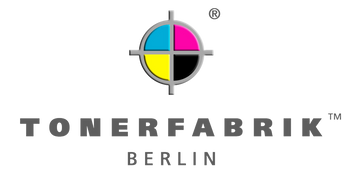The advantages of LED printers for efficient printing solutions
LED printers offer a number of benefits that make them particularly attractive for use in modern office environments. From their energy efficiency to their compactness, the advantages make them particularly attractive for smaller workspaces and businesses with high print volumes. In this section, we explore how LED printers can help reduce running costs while increasing operational efficiency and productivity.
Compact design for small office environments
One of the outstanding advantages of LED printers is their compact design. Compared to traditional laser printers, which are often bulky and heavy, LED printers offer a sleek and space-saving solution. This makes them ideal for office environments where space is limited and every square meter needs to be used optimally.
Space saving and easy handling
The compact design of LED printers not only saves space, but also makes them easier to handle and install. These printers can be conveniently positioned on a desk or in a small corner without overloading the work area. The lower weight compared to traditional printers also makes them easy to move when needed. These features are particularly valuable in dynamic office environments where flexibility and space optimization are crucial.
By integrating LED printers, companies can not only make better use of their physical space, but also make their printing infrastructure more efficient. Whether in a small start-up or a hectic agency environment, reducing space requirements while maintaining high printing standards is a key benefit that makes daily work much easier.
Energy efficiency and environmental protection
LED printers are known for their energy efficiency, making them a preferred choice for environmentally conscious businesses. These printers use LED light sources, which consume significantly less energy than the lasers in traditional laser printers. This efficiency not only helps reduce electricity costs, but also has a direct positive effect on a company's environmental footprint.
Reducing operating costs and environmental impact
The lower energy consumption of LED printers leads to lower running costs, which is especially important for companies with high print volumes. In addition, the lower energy requirements reduce CO2 emissions, which reduces the environmental impact. Companies that choose LED printers can therefore reduce their running costs while minimizing their environmental footprint.
Reliability and lower maintenance costs
The reliability of LED printers is another significant benefit that positively impacts the total cost of ownership. Due to their design with fewer moving parts than traditional laser printers, LED printers are less prone to mechanical failures. This increased reliability means less downtime and lower maintenance costs.
Longevity and cost savings through fewer repairs
The longevity of LED printers is promoted by their simple design and the absence of complex mechanisms such as rotating mirrors and precision lasers. Fewer wearing parts mean fewer repairs and therefore long-term cost savings. For companies, this results in improved productivity and lower long-term investments in the maintenance of their printing technology. These aspects make LED printers an economically attractive solution for any business that wants to optimize its operating costs while ensuring reliable printing services.
Application areas and potentials of LED printers in different environments
LED printers are not only known for their energy efficiency and reliability, but also for their versatility in a variety of work environments. From small and medium-sized businesses to flexible home offices, LED printers offer numerous benefits that make them an ideal choice for a variety of needs. In this section, we look at specific application areas and discuss why LED printers perform particularly well in these scenarios.
Optimal use in small and medium-sized companies
Small and medium-sized businesses (SMEs) are often challenged to find high-quality printing solutions that are both cost-effective and high-performance. LED printers are ideal in this regard, as they offer high print quality and speed without increasing running costs. Their compact design saves valuable office space, while the lower maintenance requirements and reduced energy consumption help to minimize running costs. This makes LED printers a practical choice for SMEs looking to increase productivity while controlling costs.
Benefits for home offices and flexible workplaces
In today's world where flexible working and home offices are becoming more common, it is important to have a reliable and efficient printing solution. LED printers are ideal for use in home offices as they are quiet, take up little space and are ready to use straight away. Their energy efficiency is particularly beneficial for home users looking to reduce costs and energy consumption. In addition, the ease of use and maintenance of LED printers allows even less technically savvy users to manage their printing tasks effectively. The ability of LED printers to print quickly and in high quality means that even urgent tasks can be completed efficiently, making them an ideal solution for dynamic and varying work needs.
Future prospects and developments in the field of LED printing technology
Already offering numerous advantages over traditional printing methods, LED printing technology is on the cusp of exciting advancements. In this section, we look at the latest innovations and predict the future direction of this technology. These insights can help companies make informed decisions about their future printing infrastructure.
Innovations and technological advances
Research and development in the field of LED printing technology is increasingly focusing on increasing energy efficiency and expanding printing functions. Modern LED printers are being developed with more advanced image processing algorithms and higher color accuracy to meet the requirements of professional printing environments. Engineers are also working on integrating environmentally friendly materials and techniques that further reduce energy consumption and improve sustainability. Another focus is on improving user-friendliness through intuitive user interfaces and smart networking options that enable seamless integration into existing IT infrastructures.
Market development and future forecasts
The market development for LED printers looks promising as both companies and individuals seek more sustainable and cost-effective solutions. Experts predict steady growth in this segment, especially in markets that place a high priority on environmental sustainability and energy efficiency. In addition, technological improvements and falling costs for LED technologies are driving adoption in developing and emerging countries. In the long term, these trends could lead to LED printers taking a dominant position in the global printer market as they offer the balance between high performance and environmental responsibility.
The ongoing development of LED printing technology continues to be driven by the growing awareness of environmental issues and the need to reduce costs. Companies that rely on this advanced technology can not only reduce their operating costs, but also make their contribution to protecting the environment.



